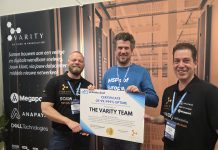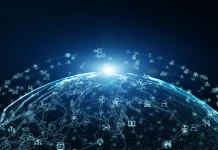This article is part of the On Tech newsletter. You can sign up here to receive it weekdays.
On Monday, the Supreme Court said it was kosher to copy someone else’s computer code in some cases. That handed Google a win in a decade-long court battle with Oracle over the guts of the Android smartphone system.
I’ll explain why the technology industry was relieved by the decision, and the ways it might be relevant for artists, writers and archivists. I also want us to ponder this: Why are thorny legal questions seemingly inescapable in technology right now?
What was the legal case?
Oracle controls software programming technologies called Java that are a building block for many apps and digital services. Google used a relatively small chunk of Java computer code in its Android operating system, and that made it easier for software experts to make smartphone apps.
In the Google v. Oracle America case, Google said it was standard practice to copy what are called application programming interfaces, or APIs, a set of instructions to make sure that technologies from different companies can work together. Oracle said that Google stole its software and demanded billions of dollars. Each company said it was trying to save the tech industry from ruin.
This is complicated stuff that made lawyers on both sides and the justices grasping for analogies — safecracking, football playbooks and restaurant menus — to explain APIs. In his majority opinion on behalf of six justices, Justice Stephen G. Breyer compared APIs to the gas pedal, which tells a car to move faster, and a keyboard that types a letter when you press a specific key.
A big question went unanswered, but it might not matter.
Google won. Although as my colleague Adam Liptak wrote, the Supreme Court had previously said it would answer two questions: Whether companies like Oracle could copyright APIs, and if so, whether Google’s use of them fit an exception to the copyright law known as fair use. A majority of the justices answered only the second question, with a yes.
Two justices, Clarence Thomas and Samuel A. Alito Jr., said it was a mistake to sidestep the question of whether APIs are protected by copyright laws. Justice Thomas wrote that he would have said yes.
Even though the justices left an open question, intellectual property lawyers told me that the decision should give comfort to companies that use APIs. The Supreme Court essentially blessed what Google did because it took APIs and transformed the software into something new that can benefit all of us.
Many technologists had sided with Google — even those who aren’t usually fans of the company. They worried that if companies could prevent rivals from using APIs or charge exorbitant prices to use them, it could discourage companies from inventing new products. For them, the Supreme Court decision brought relief.
“That’s going to be a big comfort for a lot of the companies that are trying to start up and be compatible with their competitors,” said Charles Duan, a senior fellow at the R Street Institute, a think tank that advocates free markets and limited government.
Oracle said that Google “stole Java and spent a decade litigating as only a monopolist can.” (These companies do not like each other at all.)
What are the potential repercussions?
Duan and other experts I spoke with said they were very excited that the justices backed a broad view of the legal right to fair use. That’s the concept that if you excerpt words or images belonging to others and add enough of your own creativity, you don’t need to get their permission or pay them.
But determining whether something falls under the fair use exception can be complicated, and even feel subjective. This month, a court ruled that an image of Prince made by Andy Warhol was not fair use of a photograph.
Justice Breyer wrote that when considering whether fair use applies, courts shouldn’t look at only technical questions about the two parties involved in the case but think big about whether the copying brings a benefit to society.
Kendra Albert, a clinical instructor at the Harvard Law School Cyberlaw Clinic, told me that the decision could lead to more legal protections for artists, people who create fan fiction and a group that Albert represents that archives old software such as past editions of Microsoft Excel.
Technology is basically all legal fights.
I want to leave you with a point that I discussed with Mark Lemley, a copyright and antitrust professor at Stanford Law School.
The technology industry is racked with legal questions now: How should the First Amendment apply to social media companies? Do antitrust laws need to be rewritten for Big Tech? Does a 25-year-old internet law preserve people’s free expression or crush it? Tech now revolves around laws, not just computer code.
Before we go …
-
A SCOTUS shiver through social media: Also on Monday, Justice Thomas mused that huge websites like Facebook may not deserve legal protections for policing what people say online. Adam Liptak wrote that Justice Thomas’s “views on the First Amendment can be idiosyncratic” but that his opinion reflected “frustration, particularly among conservatives, about letting private companies decide what the public may read and see.”
-
A window into the use of a tech superpower: BuzzFeed News reported that people at nearly 2,000 police departments and other taxpayer-funded agencies have used Clearview AI to conduct about 340,000 searches of people’s faces — often without the knowledge of their supervisors or the public.
My colleague Kashmir Hill has written extensively about Clearview’s facial recognition technology, which some people desperately want and others fear.
-
When missed calls were a big business: Because mobile phone calls were very expensive in India, many people used to communicate by dialing friends and hanging up. Rest of World explains how one company harnessed that habit by using missed calls to deliver cricket scores, digital songs and more. It all imploded once smartphone data became dirt cheap in India.
Hugs to this
Evan Manivong, a gymnast at the University of Illinois, stuck the landing on a vault and then celebrated by showing off his Covid-19 vaccination card. Please make a public health campaign from his video.
We want to hear from you. Tell us what you think of this newsletter and what else you’d like us to explore. You can reach us at ontech@nytimes.com.
If you don’t already get this newsletter in your inbox, please sign up here.














